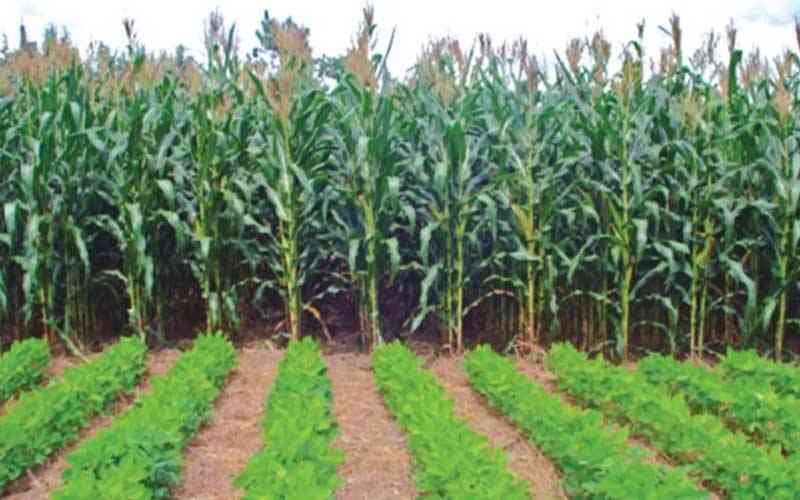
THE 2022/23 agriculture season is at its tail-end for many crops as marked by the scheduled official opening of the tobacco selling floor on March 8 2023.
The season has been at the mercy of several push-and-pull factors, and we look at these factors and their impact on yields, producer prices, and export receipts for the country’s major crops.
We identify three key factors in the agriculture sector that have presented divergent forces to many of the sector’s performance metrics, namely
(i) changing producer prices and payment modalities,
(ii) Good rainfall, and
(iii) higher fertiliser prices.
The good rains were correctly predicted at the 26th annual Southern Africa Climate Outlook Forum (SARCOF-26) given that Zimbabwe has received a generous amount of rainfall, which has also propped up dam levels across Zimbabwe’s major water bodies.
According to Zimbabwe National Water Authority (Zinwa), 26 of Zimbabwe’s major dams - which include Tugwi-Mukosi, Mutirikwi, Manyame and Osbourne — have an average dam level of 97,9%, which is six percentage points higher than the 2021 dam levels’ average of 91,9%. Kariba, on the other hand, continues to experience a decline in usable water storage, from 48% in August 2021 to 13% in February 2023, largely because of Zimbabwe’s increasing dependence on hydroelectricity in recent months.
- ED vows to shake off basket case status
- Music brought windfall in my life: Pinjisi
- Nyatsime residents fume over penalty fees
- ED drawn into fight over shrine
Keep Reading
Overall, these numbers confirm SARCOF-26’s expectations but we also opine that the above-average rainfall in recent weeks is more than what is required by tobacco and maize farmers.
Tobacco is a very sensitive crop and extended rainfall during the drying season of the crop can affect yields.
Similarly, extended rainfall after planting through early emergence can increase the risk of seed or seedling diseases.
If the events occur prior to emergence, soil crusting can occur reducing emergence and ultimately the final stand.
Either of these can cause nitrogen leaching leading to lower yields.
Although price increases have slowed down in several raw materials of fertiliser, the price of fertiliser remains elevated ever since the Russia-Ukraine conflict took centre stage in global news last year.
In addition, supply chain challenges remain a concern, especially for agrarian economies like Zimbabwe.
According to the World Bank, the ongoing conflict has resulted in production cutbacks in ammonia — an important input for nitrogen fertilizers.
As of October 2022, about 70% of European ammonia production capacity had been reduced or shut down.
We also add that potash exports from Belarus have fallen by more than 50% due to the restriction on using the European Union (EU) territory for transit purposes.
In particular, Lithuania has halted the use of its railway network to transport Belarusian potash to the port of Klaipeda, which typically handles 90% of Belarus exports.
Overall, this has seen a steep increase in the price of fertiliser in Zimbabwe.
If the performance of fertiliser sales by CFI Limited — a major agricultural inputs retailer in Zimbabwe — in its latest trading update is a proxy to the impact of rising fertiliser prices, then it is fair to assume that some farmers are struggling to purchase adequate quantities of fertiliser throughout the country.
Improved Grain Marketing Board (GMB) producer prices, however, are likely to incentivise local farmers to increase output nonetheless.
The government set a new maize producer price of US$335 per tonne in December 2022, a revision that incorporates the high cost of fertiliser plus a 15% markup.
However, given that this was announced in the last days of December, we opine that the incentive was a tad too late to prop up volumes especially for farmers who planted late maturity varieties of the crops.
The improved payment modalities, which were improved and standardised to 75%, are also likely to push more farmers to focus on export crops.
In addition, tobacco was exempt from the standard 75% foreign currency retention and farmers will receive between 80% and 85% of their proceeds.
Looking at all the above, we infer that yields for crops like maize could be lower in areas that will receive excessive rains.
A study by Li et al (2019) on the impact of excessive rainfall reveals a reduction in maize yields by up to -34% in the US relative to the long-term average.
We opine that continued rainfall so close to the selling period of maize, which usually begins in April, could affect the yield and this could be worsened by inadequate fertiliser.
We also note risks to the quality of tobacco, which could be affected by the excessive rains, and this could translate to a lower price for tobacco farmers compared to last year despite an expected haul of 230 million kg this year.
We identify Hippo Valley Estates, Seed Co Limited, and TSL as major beneficiaries of these dynamics. Sugarcane from Hippo Valley Estates is largely irrigated using the Tugwi-Mukosi Dam, which was 91,7% full as of February 27 2023.
Sugar prices have also firmed globally and this will improve the producer’s export receipts in 2023.
Seed Co Limited is also likely to benefit from the rebound in seed sales, which have been buoyed by the above-average rainfall while upside in TSL hinges on the higher output of tobacco, which will drive more activity on its tobacco selling floors.
Mtutu is a research analyst at Morgan & Co. — [email protected] or +263 774 795 854.










